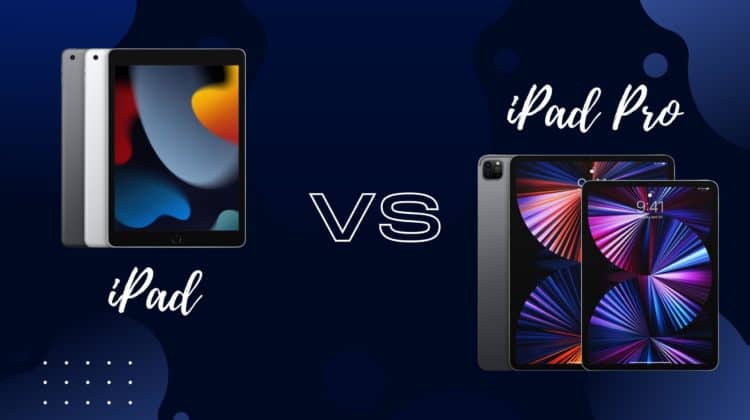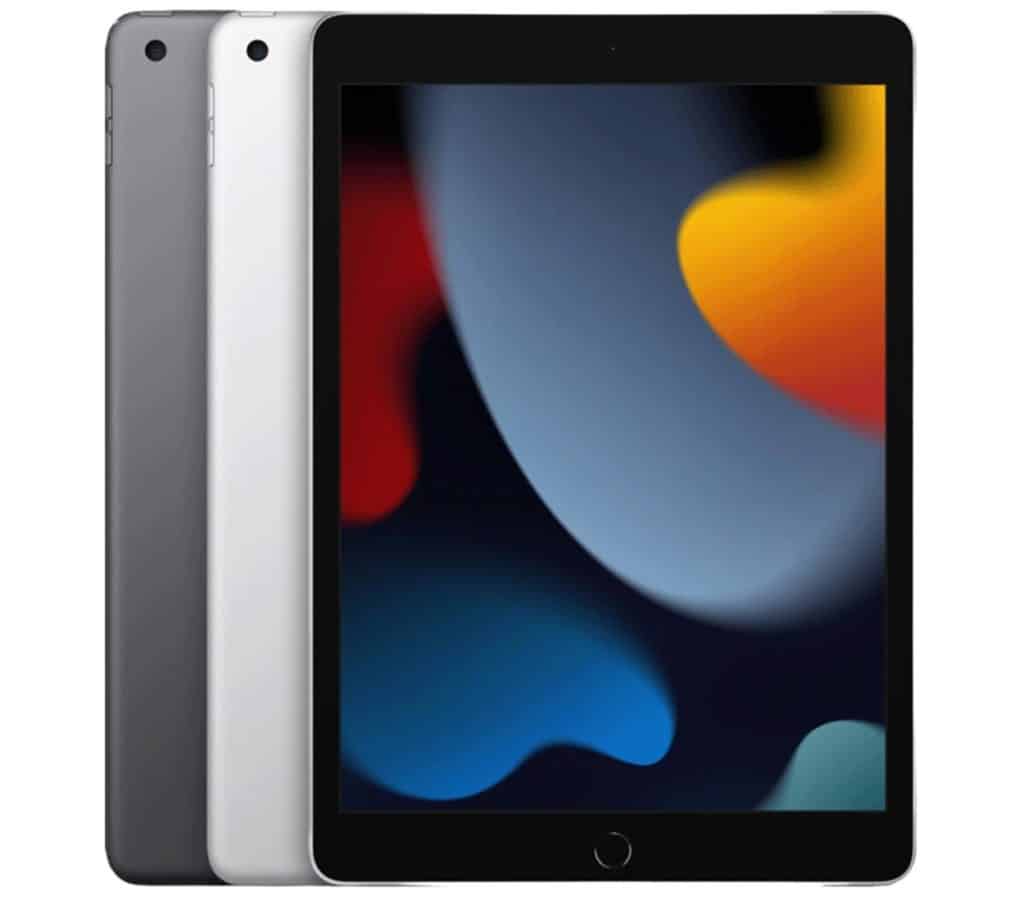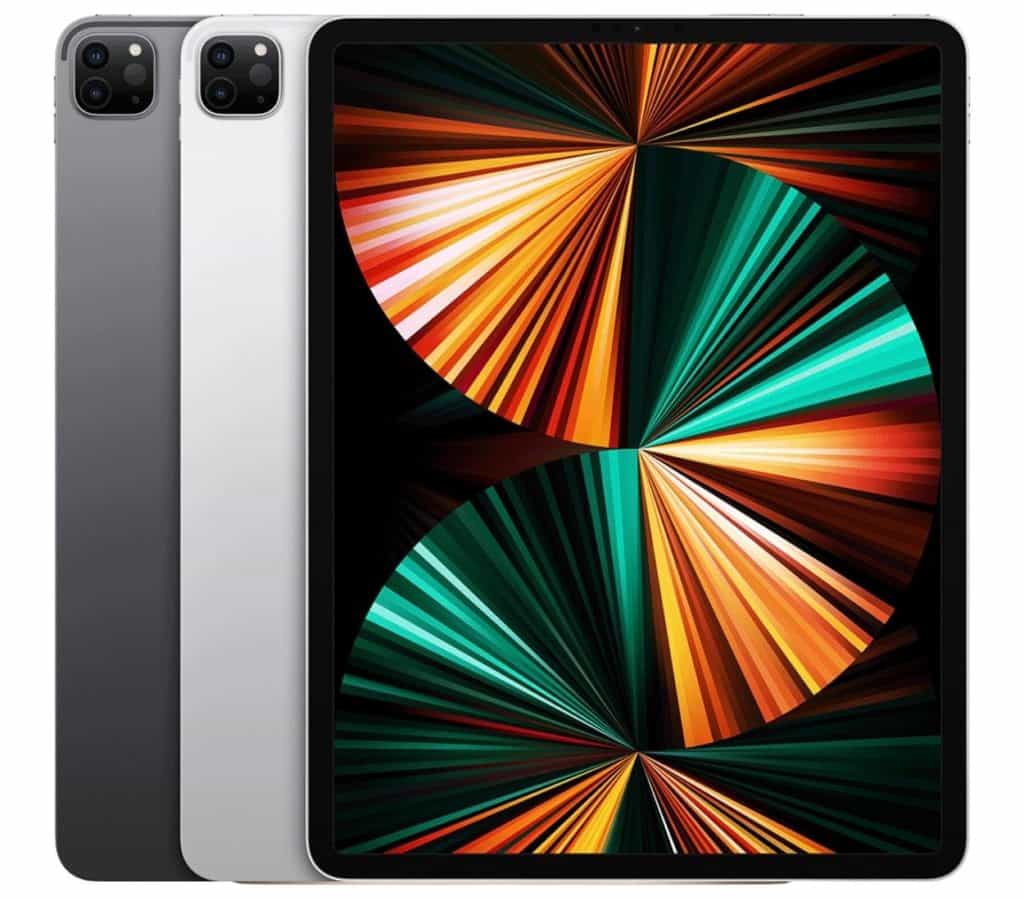
iPads have gotten pretty powerful with time — you can do a whole lot more on an Apple tablet than you could a few years ago. And with the M1 chipset appearing in iPads, you can easily replace your work laptop with one of these amazing devices. But what is the difference between iPad and iPad Pro and which one would be right for you? To learn all about these tablets, go ahead and read this iPad vs iPad Pro comparison we wrote for you guys!
Difference Between iPad and iPad Pro
To a layman, there may not be much of a difference between the iPad and iPad Pro. After all, if you want to watch movies and surf the Web, there’s no need to spend more and get a Pro model. But for those who want more, power users who do a lot more on their tablets than just watch movies, the iPad simply won’t suffice. We are going to take a closer look at the differences (and similarities) between the iPad and iPad Pro. But before that, let’s look at the pros and cons of the iPad and iPad Pro.
iPad
Pros
- Great entry-level tablet that offers excellent value for money
- Outperforms all tablets in its price range
- Camera specs on the iPad have been bumped up
- Supports Apple’s Smart Keyboard
- Has a headphone jack
Cons
- Has an outdated design
- The screen has a refresh rate of 60Hz, which dampens the visual experience
- Is nowhere close to the iPad Pro in terms of performance
- Has the old lightning port (USB 2.0), instead of a Type-C USB port
iPad Pro
Pros
- The best tablet that you can buy with your money
- Equipped with the Apple M1 chip
- Can comfortably handle the heaviest tasks you throw at it
- Has a Thunderbolt 4 Type-C 4.0, with DisplayPort
- Is 5G ready (cellular model)
- Has a Liquid Retina XDR mini-LED HDR10 screen with a refresh rate of 120Hz (2021 12.9” model)
- Has 4 stereo speakers
- Supports Face ID authentication
Cons
- Is prohibitively expensive
- Are a bit large and heavy, making them unwieldy
- All its peripherals are expensive as well
- Is not a true laptop replacement yet because of a few critical apps missing
- You can only mirror your display externally, not extend
Related Read: Can an iPad Pro Replace a Laptop? Let’s find out!
Differences and Similarities between iPad and iPad Pro
Similarities
- Both the iPad and the iPad Pro can do the same things; the iPad Pro just does them all better.
- Both are upgradable to iPadOS 15.5.
- Both of these tablets work with Apple Pencil.
- You can buy WiFi-only and WiFi+Cellular models of both these iPads.
- The iPad and iPad Pro both have 12MP f/2.4 cameras on the front.
- Both the iPad and iPad Pro feature Touch ID.
Now, let’s look at the differences between the iPad and iPad Pro.
Differences
- The most obvious difference between the two is in the design — the iPad has a Home button, whereas the iPad Pro does not.
- The maximum memory specs you can find on an iPad are 3GB RAM/256GB, whereas the iPad Pro goes much higher at 16GB RAM/2TB.
- The iPad Pro is powered by the beastly Apple M1 processor, whereas the iPad is equipped with the much-tamer A13 Bionic.
- You get Face ID on the iPad Pro, whereas the iPad only offers Touch ID.
- The display on the iPad maxes out at 10.2 inches. In comparison, the iPad Pro is available in a 12.9-inch version.
- A 3.5mm headphone jack is available on the iPad, whereas you will have to stick with AirPods or other Bluetooth earphones with the iPad Pro.
- If you get an iPad, you can only use the Apple Pencil 1. The iPad Pro works with both Apple Pencil 1 and 2.
- The rear camera on the iPad Pro absolutely crushes the iPad, as you get a triple-camera setup that includes a TOF (time-of-flight) 3D LiDAR camera. In comparison, the iPad has an okayish 8MP rear camera.
- You are restricted to recording 1080p videos on the iPad, whereas the iPad Pro can record 4K video footage at 60 frames per second. You can also edit large files and export them from your iPad Pro with ease, whereas the iPad would struggle with larger editing jobs.
- The iPad cannot connect to 5G networks, unlike the iPad Pro.
- The iPad Pro comes with a Type-C Thunderbolt 4 USB port, whereas the iPad 2021 has a lightning port at USB 2.0.
- The iPad Pro offers Bluetooth 5.0 compared to Bluetooth 4.2 on the iPad.
Here’s a tablet with the main specs of the iPad and iPad Pro, sidFe by side.
| Features | iPad 10.2-inch (2021) | iPad Pro 12.9-inch (2021) |
|---|---|---|
| Display | 10.2 inches | 12.9 inches |
| Display Type | Retina IPS LCD | Liquid Retina XDR mini-LED LCD |
| Resolution | 2160 x 1620 | 2048 x 2732 |
| Processor | Apple A13 Bionic | Apple M1 |
| Memory and storage | 3GB RAM, with 64GB/256GB storage options | 8GB RAM 128GB 8GB RAM 256GB 8GB RAM 512GB 16GB RAM 1TB 16GB RAM 2TB |
| Battery Capacity | 8,557mAh | 10,850mAh |
| Rear Camera | 8MP | 12MP + 10MP + 3D LiDAR Camera |
| Front Camera | 12MP | 12MP |
| Audio | Stereo speakers | Quad Stereo speakers |
| Authentication | Touch ID | Face ID | Touch ID |
| Price | Check Price on Amazon | Check Price on Amazon |
iPad vs iPad Pro: Features Face to Face
The table above gives you an idea that the iPad and iPad Pro are different. Since different parameters matter to different people, we are going to delve further into each of those specs. Let’s start with the displays.
Design and Display
The iPad Pro series is the pride and joy of the Cupertino company, and the design reflects those emotions. The tablet is stunning even before you turn the screen on. Keep the 2021 iPad next to it, and things get a bit awkward because the iPad simply does not match up to the Pro model since it has large bezels, rounded edges, and a Home button, which is a rapidly-disappearing element of Apple’s design philosophy.
Another thing we loved about the iPad Pro is the ability to magnetically attach the Apple Pencil 2 to the side and have it charge while attached. It’s a great way of ensuring you never lose your Apple Pencil. If you are the kind to lose your Apple Pencil frequently, we wrote an article on how to keep the Apple Pencil from getting lost and how to find it if you lose it!
Screen Size
As for the screens themselves, the iPad has a 10.2-inch Retina IPS LCD with a resolution of 1620 x 2160 pixels, whereas the iPad Pro 12.9-inch model has a Liquid Retina XDR mini-LED LCD and offers a resolution of 2048 x 2732 pixels. If you opt for an 11-inch iPad, you get a Liquid Retina IPS LCD and a resolution of 1668 x 2388 pixels resolution. The iPad also lacks the 120Hz refresh rate and HDR10 capabilities of the iPad Pro series. The iPad Pro dominates this round!
Weight
Both the iPad and iPad Pro have glass fronts, aluminum backs, and aluminum frames. But thanks to the size of the iPad Pro and the extra hardware, the weight climbs up to 1.5 lbs, which is pretty heavy for a tablet. The iPad sticks to its weight category at 1.07 lbs.
In our opinion, when it comes to design and display, the iPad Pro definitely wins.
Performance
The iPad is perfect for someone who wants a basic yet competent tablet that can do it all. You can play games, watch movies, surf the internet, and listen to music. The iPad is equipped with the A13 Bionic chip which can easily manage the tasks of day-to-day use. The iPad is a great value for the money because it completely crushes its rivals when it comes to performance.
The iPad Pro, on the other hand, is more focused on the creative professional, as it’s equipped with Apple’s M1 chipset, which blew away the computing world when it first appeared on the Macbook Air in 2020. It is also packed to the gills with memory specs and the best hardware that Apple could possibly pack into a device. With this kind of chipset within, the iPad Pro has no competition in the market. Easy win for the iPad Pro!
And if your current iPad has been running slower than usual, here’s a useful article you could read!
Battery life
The 10.2 iPad 2021 ships with an 8,557mAh battery, and numerous tests indicate that it is a battery beast, and will offer an average user well over 12 hours of use on a single charge. This number will be affected by excessive gaming or by watching movies back to back, but it’s a good benchmark number to expect.
The 12.9-inch iPad Pro, on the other hand, has a power-hungry display and a much more powerful chipset, but thankfully has a larger battery to compensate for it. That said, you’re looking at about 10-10.5 hours of use on a single charge, on a good day.
It’s a whole different story with the 11-inch iPad Pro, which performs much better on battery life than either of the above tablets, offering over 13 hours of use on a single charge. And as it’s a part of the Pro series, the iPad Pro wins this round!
Accessories
Accessories maketh the tablet! We feel that cases, keyboards, styluses, and other peripherals make using a tablet much more enjoyable, so let’s see how things stand with the iPad and iPad Pro.
Apple Pencil
The iPad Pro can work with both Gen 1 and Gen 2 of the Apple Pencil, whereas Apple has limited the iPad to being compatible only with the Apple Pencil 1. And if you want to know the difference between the two styluses, here’s an article we wrote on the differences between Apple Pencils 1 and 2!
Keyboard
If you’re looking for a keyboard for the iPad Pro, you can choose between the Magic Keyboard, which has a trackpad and works as a stand for your iPad Pro, or you can opt for the Smart Keyboard Folio, which also doubles up as a case to protect your iPad Pro. In comparison, you can only get a Smart Keyboard for your iPad, as it lacks a Smart Connector. The iPad Pro also has a lot more third-party keyboards available for it, like this Logitech keyboard combo. You can also find a similar case for the iPad.
Processor, RAM, Storage
As we’ve already mentioned, the Apple iPad comes equipped with the A13 Bionic chip, which is also present in the iPhone 11. The chipset is excellent when it comes to your daily activities, and you won’t see a lag or glitch happen while operating the tablet, though it may get a bit slow while taking on heavier games or editing huge video files.
The iPad Pro, however, takes on all tasks with vigor and breezes through everything, including heavy apps and graphics-heavy games. This is thanks to the M1 chipset, which is powerful enough that you won’t notice performance issues for at least 4 to 5 years.
In terms of memory, the best configuration you can find on an iPad is the 3GB RAM 256GB storage model, whereas the iPad Pro goes as high as 16GB RAM with 2TB of onboard storage. The iPad’s base model offers 3GB RAM paired with 64GB of storage space whereas the iPad Pro offers an 8GB 128GB model as the base version. There are no SD card slots on either of these two devices, so internal storage is all you get. We must point out, however, that the iPad Pro’s Thunderbolt 4 port makes file transfers to external drives lightning fast, as it offers USB version 4.0 technology.
The iPad simply cannot match the iPad Pro’s memory and chipset specs, giving this round to the iPad Pro.
Camera
The iPad Pro has a triple camera rear setup, and one of these cameras is a LiDAR camera. LiDAR (or light detection and ranging) technology allows the iPad to use lasers to scan for depth, which converts to better photography and a superior augmented reality (AR) experience. Apple has also included the camera in its 12 Pro and 13 Pro iPhones, meaning the company is investing heavily in AR.
Even when it comes to regular photography, the 12MP + 10MP (ultrawide) camera setup on the back of the iPad Pro outdoes the iPad’s humble 8MP snapper at every turn. On the front, you get similar 12MP cameras, so there isn’t a significant difference and both tablets perform equally well on video calls. But all in all, it’s a mammoth win for the iPad Pro in the camera department.
Software
The iPad and iPad Pro can be upgraded to iPadOS 15.5 and will receive updates for many more years, so you’re looking at a similar software experience from both devices. Features-wise too, these iPads are similar, except maybe when it comes to cameras and using your Apple Pencil, where the iPad Pro outshines the iPad. This round is a draw!
User Experience
Speaking of user experience, the iPad Pro scores this round with ease. The biggest contribution to this decision was the display of the iPad Pro, which eclipses the basic iPad in terms of clarity, colors, smoothness, and richness. The iPad has a great display, but that only applies as long as it is not next to an iPad Pro.
Besides this, the iPad Pro is also a lot faster and is at ease while working on editing apps and resource-heavy games, thanks to its chipset and memory specs. Additionally, drawing on the iPad Pro is a superior experience since it supports the Apple Pencil 2.
This round goes to the iPad Pro!
Video Quality
We’re happy to see a trend of improved cameras on the iPads, as that was not the case earlier. But as more people shoot videos for social media and for projects, Apple saw the sense in equipping the iPad Pro models with cameras that are almost as good as the iPhone’s camera. We say almost because the iPad Pro is still missing the ability to shoot night mode photographs.
It can, however, shoot 4K videos at 60 fps (frames per second), and 240p slow-motion footage at full HD resolution. The iPad can’t match these stats at all, as it can only record full HD or 1080p videos at 30 fps. The iPad Pro wins this round with its powerful camera hardware.
We found an awesome video comparing the iPad to the iPad Pro, so take a look:
Price
There is a massive difference in the pricing of the iPad and the iPad Pro, as you will need to shell out over $1000 to get your hands on a Pro model whereas you could get an iPad for somewhere in the $300 range, if you can find a good deal. We took a look on Amazon and pulled the lowest prices we could for both of these devices.
Apple iPad 10.2-inch (2021)
Apple iPad Pro 12.9-inch (2021)
Frequently Asked Questions
What is the main difference between iPad and iPad Pro?
The biggest difference between the iPad and iPad Pro is the screen. The iPad Pro has a much better display than the iPad. It also has a better chipset — while the iPad’s A13 Bionic is impressive, it simply can’t match up to the Apple M1 processor inside the iPad Pro. Another significant difference would be the camera hardware of both tablets.
What can an iPad Pro do that an iPad can’t?
The iPad Pro is much better at editing videos, it supports Apple Pencil 2 which the iPad does not, and it is compatible with the Magic keyboard because it has a magic connector. The iPad Pro can connect to 5G networks, which the iPad cannot do. It can also connect to an external display via its port, which is another thing the iPad cannot do.
What are the benefits of iPad Pro?
The iPad Pro is powerful enough to replace your laptop if you can find all the apps you need. It offers great battery life, it’s ideal for students as the main computer, and it’s great for creative professionals who don’t wish to lug around a heavy laptop.
Is it worth buying an iPad Pro now?
If you buy an iPad Pro today, it will serve you for many years because of how powerful the Apple M1 chipset is. The memory specs are also impressive and we can’t foresee a situation where you would need more than 16GB of RAM in the next 5 years.
Conclusion
The difference between iPad and iPad Pro boils down to the use case, as the iPad will not be sufficient for someone who wants to work extensively on the tablet and the iPad Pro would be overkill for someone who wants a tablet to watch online content on. We hope our iPad vs iPad Pro comparison article helped you make a decision about which one would be best for you, and if you have any more questions about these awesome tablets, leave us your thoughts in the comments section!
Also Read: Difference Between iPad and iPad Air: Specs & features compared!



Leave a Reply